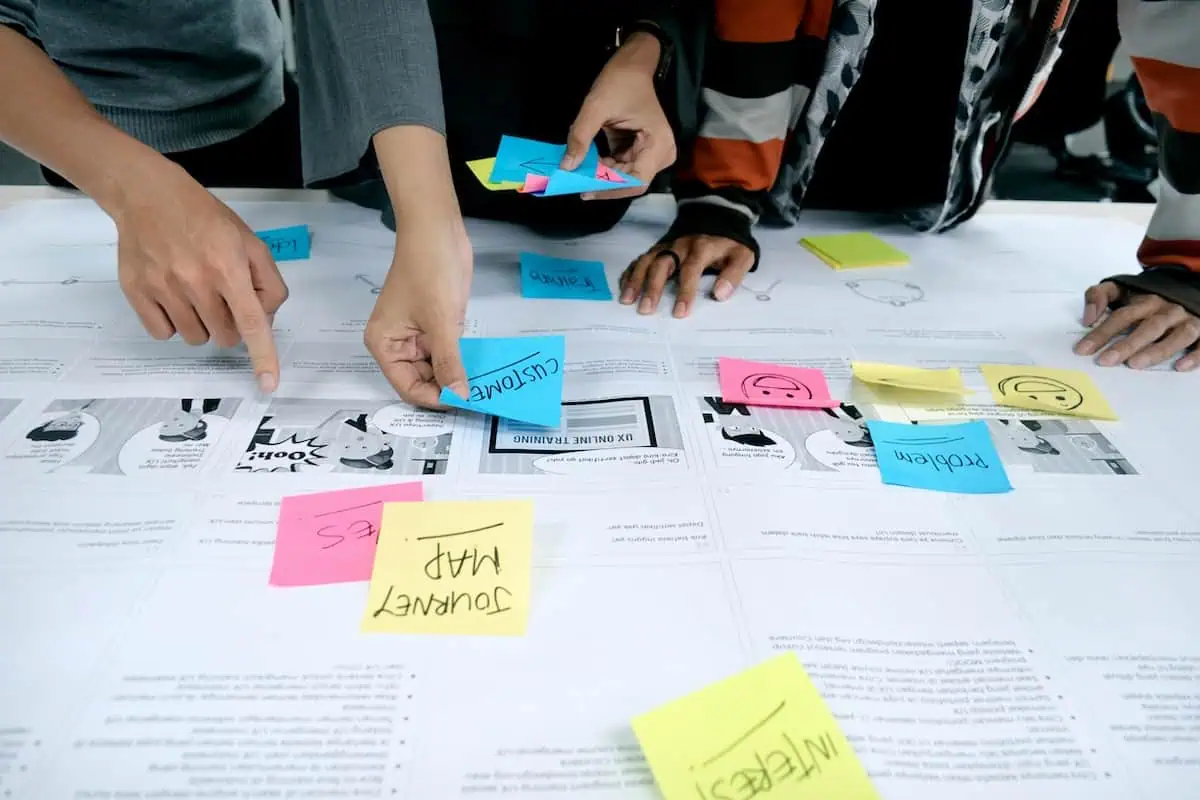In modern business, success goes beyond products or services; it’s about creating a resonant customer experience at every brand touchpoint. This guide explores the customer journey – what it entails, its significance, stages, and optimizing strategies for businesses.
What is a Customer Journey?
The customer journey tracks a customer’s interactions with a company from start to loyalty, across different channels. It’s distinct from the overall customer experience, as it emphasizes actions at each stage, while the experience encompasses overall sentiment.
Mapping out this journey is essential for enhancing the customer experience, involving three steps: outlining the lifecycle, identifying touchpoints, and analyzing gaps.
Gathering direct customer feedback through targeted questions is crucial for an accurate understanding. Yet, despite its importance, many businesses fail to collect and utilize this feedback effectively. For instance, By transitioning from a free trial to a demo request based on customer feedback, SuperOffice saw a notable uptick in sign-ups from their target audience.
Companies can surpass expectations by consistently meeting customer needs at every stage, fostering enhanced satisfaction and loyalty.
Customer Journey vs. Customer Experience
While the terms “customer journey” and “customer experience” are often used interchangeably, there’s a subtle distinction between the two:
Customer Journey: Refers to the specific actions and interactions that a customer takes at each stage of their interaction with a company.
Customer Experience: Encompasses the overall perception and sentiment a customer holds about the entire lifecycle of interactions with a brand.
The customer journey focuses on the steps taken, while the customer experience reflects how those steps make the customer feel.
The 7 Phases of the Customer Journey
The customer journey is intertwined with every direct interaction between the customer and your company or product:
- Pre-Purchase: Customers encounter online advertising, social media, and email marketing.
- During Purchase: Customers engage with sales teams, consultants, and your company website.
- Post-Purchase: Customers interact with training material, follow-up inquiries, and future customer marketing communications.
Breaking down the customer journey reveals seven phases: Out-of-Market, Trigger, Initial Brand Consideration, Active Evaluation, Purchase Decision, Experience, and Loyalty.
Let’s delve deeper into each phase, focusing on the perspective of a B2B buyer.
1. Out-of-Market Phase
During this phase, the customer seeks to enhance their business productivity and efficiency. They may lack clarity on how to achieve these objectives but remain receptive to inspiration.
2. Trigger Phase
The trigger phase commences when the customer recognizes the opportunity to enhance their business. This realization may stem from declining sales or increasing customer complaints, prompting a shift in their approach.
3. Initial Brand Consideration Phase
Once the customer identifies a solution, they embark on an initial search. A project group, involving stakeholders, evaluates top brands in the market, scopes the project, and assesses key functionality and technical requirements, leading to a “long list” of potential solutions.
4. Active Evaluation Phase
The long list is narrowed down after an initial brand review. The customer contacts each vendor for meetings or demos. Trust, expertise, and scalability are key factors in evaluating solutions post-demos.
5. Purchase Decision Phase
The customer selects a vendor, agrees on a solution, and signs the contract. Implementation begins, and an internal rollout team is formed. With support from the solution provider, success criteria, KPIs, and launch timelines are outlined.
6. Experience Phase
Efficient solution deployment and a smooth launch are paramount for the customer. This involves comprehensive user training and access to consultant or account manager support as needed.
7. Loyalty Phase
Following the rollout, the customer experiences rapid results and satisfaction. The provider maintains follow-up, implements solutions company-wide, and continues to support the customer in achieving their goals.
Customer Journey Surveys: Key Tools for Insight
Once the customer journey is mapped out, businesses can assess their existing strategies and align them with customer expectations. Conducting a gap analysis helps identify areas where current efforts fall short and prioritize initiatives based on their impact on the customer journey.
Customer Journey Surveys are tools to gauge customer satisfaction, loyalty, and effort expended throughout their interactions with a business. They encompass various types of surveys, including:
1. Lead Generation with Website Survey Widgets
– Utilize website widgets for unobtrusive lead generation and feedback collection.
– Offer incentives like discounts or exclusive content to encourage engagement.
2. Net Promoter Score (NPS)
– Measures customer loyalty based on the likelihood of recommending the company.
– Classifies respondents into Detractors, Passives, and Promoters to calculate the NPS score.
– Conduct regular NPS surveys to monitor changes in customer loyalty and take timely actions.
3. Customer Satisfaction Score (CSAT)
– Assesses satisfaction levels regarding products, services, or interactions through customer satisfaction surveys.
– Offers versatility and adaptability across industries and company sizes.
– Conduct CSAT surveys promptly after customer interactions for meaningful feedback.
4. Customer Effort Score (CES)
– Evaluates the ease of the customer journey, particularly during transaction finalization.
– Provides insights for optimizing customer experience and frontline employee training.
– Conduct CES surveys immediately after transactions to gather relevant data.
5. Customer Exit Survey
– Captures feedback from departing customers to understand reasons for churn.
– Offers insights into areas needing improvement within the company.
– Act promptly on feedback to retain existing customers and enhance future interactions.
Incorporating these surveys into the customer journey helps businesses understand and address customer needs, ultimately fostering long-lasting relationships and business success.
Conclusion
Improving customer experience through journey mapping and touchpoint optimization is crucial in today’s competitive landscape. Understanding the customer journey and strategically aligning resources to meet expectations cultivates loyalty and satisfaction.
Distinguishing between the journey and overall experience allows for nuanced analysis while integrating customer journey surveys gathers insights for improvement. By prioritizing customer-centric initiatives, businesses can foster growth and differentiation in the market.
Article and permission to publish here provided by Nayan Bhardwaj. Originally written for Supply Chain Game Changer and published on April 12, 2024.
Cover photo by UX Indonesia on Unsplash.

